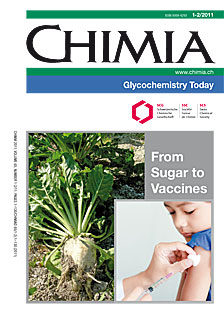Lipo-Chitooligosaccharidic Nodulation Factors: Synthesis and Agricultural Perspectives
DOI:
https://doi.org/10.2533/chimia.2011.45Keywords:
Chitooligosaccharides, Glycosylation, Nitrogen fixation, Nodulation factors, Sustainable agricultureAbstract
Lipo-chitooligosaccharidic nodulation (Nod) factors produced by rhizobia are a class of signalling molecules that induce a symbiotic association between legumes and soil bacteria rhizobia leading to the formation of the nitrogen-fixing root nodule. They consist of a chitin oligomeric backbone N-acylated at the non-reducing unit and are equipped with a variety of substituents at both ends of the oligosaccharide. This brief account focuses on the different approaches developed for their synthesis with particular emphasis on glycosylation methods. Current use of these Nod factors or analogs as additives in agricultural applications has shown to be very promising for sustainable agriculture.Downloads
Published
2011-02-23
Issue
Section
Scientific Articles
License
Copyright (c) 2011 Swiss Chemical Society

This work is licensed under a Creative Commons Attribution-NonCommercial 4.0 International License.
How to Cite
[1]
J.-M. Beau, Chimia 2011, 65, 45, DOI: 10.2533/chimia.2011.45.







